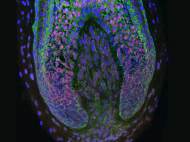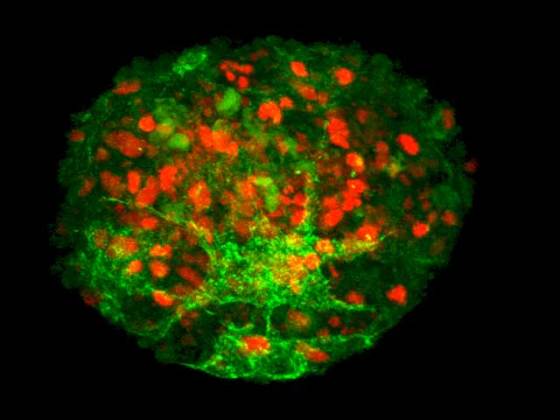New hair regeneration method allows follicles growth on bald spots
 Researchers at Columbia University Medical Center (CUMC) came up with a hair restoration method that can generate new human hair growth, rather than simply redistribute hair from one part of the scalp to another. The approach could significantly expand the use of hair transplantation to women with hair loss, who tend to have insufficient donor hair, as well as to men in early stages of baldness.
Researchers at Columbia University Medical Center (CUMC) came up with a hair restoration method that can generate new human hair growth, rather than simply redistribute hair from one part of the scalp to another. The approach could significantly expand the use of hair transplantation to women with hair loss, who tend to have insufficient donor hair, as well as to men in early stages of baldness.
This method offers the possibility of inducing large numbers of hair follicles or rejuvenating existing hair follicles, starting with cells grown from just a few hundred donor hairs. It could make hair transplantation available to individuals with a limited number of follicles, including those with female-pattern hair loss, scarring alopecia, and hair loss due to burns.
“Dermal papilla cells give rise to hair follicles, and the notion of cloning hair follicles using inductive dermal papilla cells has been around for 40 years or so”, said Colin Jahoda, PhD, professor of stem cell sciences at Durham University, England, and co-director of North East England Stem Cell Institute, who is one of the early founders of the field. “However, once the dermal papilla cells are put into conventional, two-dimensional tissue culture, they revert to basic skin cells and lose their ability to produce hair follicles.”
The researchers came up with the solution for this problem after observing rodent hair. Dr. Jahoda developed a method to easily harvest, expand, and successfully transplant rodent papillae into rodent skin. The researchers suspected that the main reason rodent hair is readily transplantable is that their dermal papillae (unlike human papillae) tend to spontaneously aggregate, or form clumps, in tissue culture.
They concluded that these clumps create their own extracellular environment, which allows the papillae to interact and release signals that ultimately reprogram the recipient skin to grow new follicles.
“This suggested that if we cultured human papillae in such a way as to encourage them to aggregate the way rodent cells do spontaneously, it could create the conditions needed to induce hair growth in human skin”, said Claire A. Higgins, PhD, associate research scientist.
To test their hypothesis, the researchers harvested dermal papillae from seven human donors and cloned the cells in tissue culture without any growth factors. After a few days, the cultured papillae were transplanted between the dermis and epidermis of human skin that had been grafted onto the backs of mice. In five of the seven tests, the transplants resulted in new hair growth that lasted at least six weeks.
DNA analysis confirmed that the new hair follicles were human and genetically matched the donors. The researchers used gene expression analyses to determine that the 3D cultures restored 22 percent of the gene expression seen in normal hair follicles. They identified a number of transcription factors (gene regulators) that have the potential to mimic the environmental signals that trigger papillae to induce new hair growth. This information could help researchers develop ways to restore the expression of more genes involved in hair growth and to increase the efficiency of the induction.
According to CUMC researchers, more work needs to be done before the method can be tested in humans. The team is optimistic that clinical trials could begin in the near future.
For more information, you can read the paper published in PNAS: “Microenvironmental reprogramming by three-dimensional culture enables dermal papilla cells to induce de novo human hair follicle growth” [1.8MB PDF].










Leave your response!